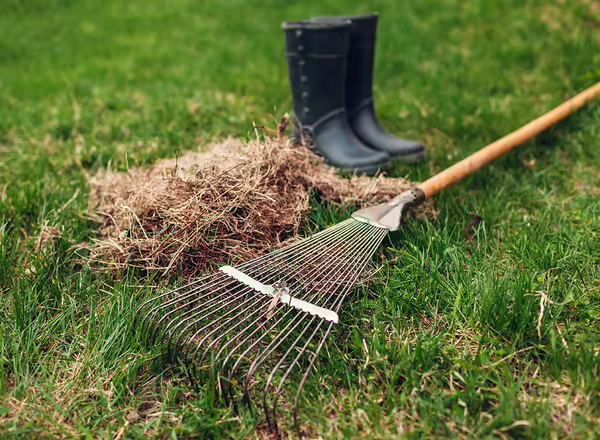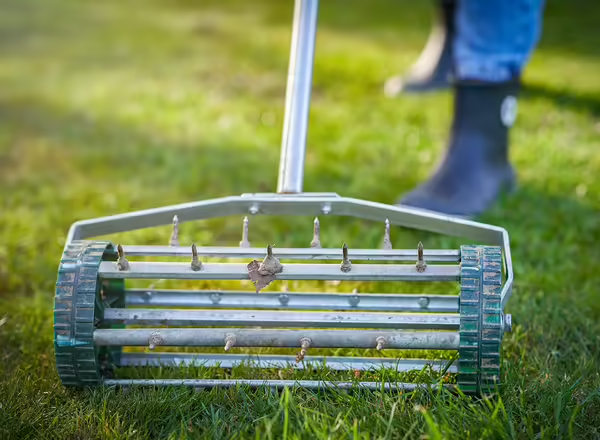
Managing Thatch in Lawns
Managing Thatch in Home Lawns
Thatch in lawns is often misunderstood; both its cause and control. Some lawns have serious thatch problems while others do not. Thatch is a layer of living and dead organic matter that occurs between the green matter and the soil surface.
Excessive thatch (over ½ inch thick) creates a favorable environment for pests and disease, an unfavorable growing environment for grass roots, and can interfere with some lawn care practices. The primary component of thatch is turfgrass stems and roots, and accumulates as these plant parts buildup faster than they breakdown. Thatch problems are due to a combination of biological, cultural, and environmental factors.
Cultural practices can have a big impact on thatch. For example, excessive nitrogen fertilizer applications or overwatering frequently contribute to thatch by causing lawns to grow excessively fast. Avoid overfertilizing and overwatering. Despite popular belief, clippings dropped on the lawn after mowing are not the cause of thatch buildup. Clippings are very high in water content and breakdown rapidly when returned to lawns after mowing, assuming lawns are mowed on a regular basis (not removing more than one-third of the leaf blade).

In our area, environmental factors typically are another primary cause of thatch. Poor soil conditions favoring thatch include heavy, wet soils; alkaline, or high pH soils; and soil compaction. The development and construction of homes and neighborhoods often result in poor soil conditions for our lawns.
Some amount of thatch can be a positive attribute for a lawn. Less than a half-inch layer of thatch creates a more cushioned surface for walking and playing. As thatch levels accumulate to greater than ½ inch, lawn problems may begin and thatch needs to be controlled.

Thatch may be torn out with a dethatcher or vertical mower, but will most likely return unless the cause is corrected. Mechanical dethatching is also very destructive to the lawn because roots are in thatch instead of soil, so plants remove easily. Overseeding is usually required afterwards. For this reason, it's best to tear out thatch in late August for optimum recovery and reseeding for cool-season lawns.

Core aerification, followed by topdressing are two methods that will generally correct the reasons thatch is accumulating. Core aerifying machines will pull up small soil cores to the surface, which are left there to act like topdressing. The holes created help solve problems such as compaction or poor drainage. Topdressing is simply adding a thin layer (1/8 to 1/4 inch) of compatible black dirt high quality topsoil, or compost over the thatch, which adds microorganisms to help in breakdown.
Aerifying equipment may be rented or services are available to do it for hire. Aerifying is an excellent lawn practice with many benefits, as it helps solve soil problems which in turn leads to better root systems and healthier lawns. Aerify in spring or fall, making sure adequate moisture exists in the soil. Make two trips over the lawn, the second perpendicular to the first. An average of 15 to 20 aeration holes per square foot is suggested.